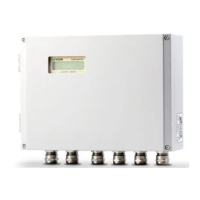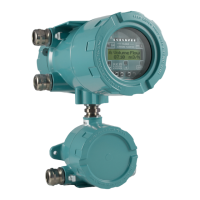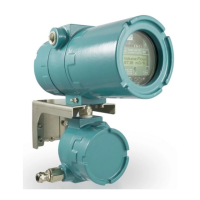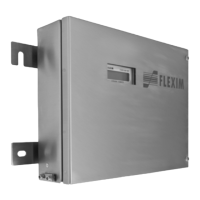UMG70XV3-4EN 12.01.2009 161
18 Outputs
If the switching condition QUANTITY is selected in the scroll list FUNC, the limit of the out-
put has to be defined:
A positive limit will be compared to the totalizer value for the positive flow direction.
A negative limit will be compared to the totalizer value for the negative flow direction.
The comparison will also be made if the totalizer of the other flow direction is displayed.
18.5.3 Defining the Hysteresis
A hysteresis can be defined for alarm output R1 preventing a constant triggering of the
alarm by measured values fluctuating marginally around the limit.
The hysteresis is a symmetrical range around the limit. The alarm will be activated if the
measured values exceed the upper limit and deactivated if the measured values fall be-
low the lower limit.
example 2: lower limit = -10 m
3
/h
A measured value of e.g. -11 m
3
/h falls below the limit. The alarm switch-
es.
A measured value of e.g. -9.9 m
3
/h does not fall below the limit. The alarm
does not switch.
Table 18.6: Limit of totalizer
switching
condition
display comparison
QUANTITY totalizer
limit
The alarm will switch if the totalizer reaches
the limit.
Note! The unit of measurement of the limit corresponds to the unit of mea-
surement of the selected physical quantity.
If the unit of measurement of the physical quantity is changed, the
limit has to be converted and entered again.
example 1: physical quantity volume flow in m
3
/h, quantity limit = 1 m
3
example 2: physical quantity volume flow in m
3
/h, lower limit = 60 m
3
/h
The unit of measurement of the physical quantity will be changed to m
3
/
min. . The new limit to be entered is 1 m
3
/min.
example: The limit is 30 m
3
/h and the hysteresis 1 m
3
/h. The alarm will be triggered
for values > 30.5 m
3
/h and deactivated for values < 29.5 m
3
/h.
Enter the hysteresis or 0 (zero) to work without hysteresis.
Press ENTER.

